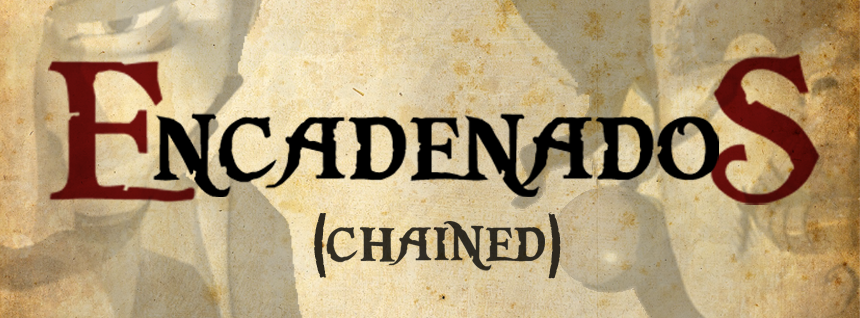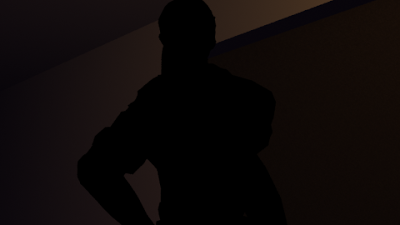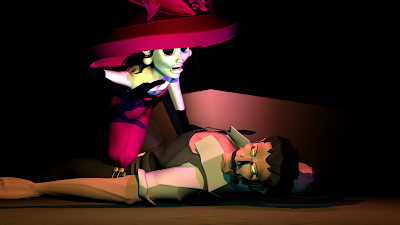viernes, 27 de mayo de 2011
martes, 26 de abril de 2011
lunes, 11 de abril de 2011
sábado, 9 de abril de 2011
jueves, 31 de marzo de 2011
miércoles, 30 de marzo de 2011
miércoles, 23 de marzo de 2011
Critical Review Assignment
On Simon Devenish
As I’ve observed through my years in Canada, environmentalism is a recurring concept in Canadian art. In a way I feel that is because a big part of what Canada stands for is related to its majestic landscape and the strong effort of its preservation. As a foreigner I’ve always thought of Canada (specially B.C.) as a never-ending forest. However sadly this seems to be an elaborated identity that is far from the truth. In fact that is what Simon is trying to denounce on his film: “I feel like we have a false sense of identity. We always think of Canada as this great wildness playground, but in fact it only looks like that from out highways and railroads, if you get off those and get into the interior, its all strip mine and clear-cutting.”
Simon ‘s piece is a somehow abstract yet very accessible metaphor of Canada’s industrialization and careless abstraction of the natural resources. In his piece he depicts a train traveling as we are shown economical profits and industrial development. As the narrative progresses we are shown how the resources turn into profits themselves. A man pukes factories and garbage that lands into piles. An old man lays on these piles of dirt and garbage, that garbage eventually makes the train de-rail, making the old man wake up.
This story clearly symbolizes Canada’s (and the world in general) current situation:
The train is quite clearly characterizing Canadian society and it’s path. Something quite interesting about this idea is the fact that the train travels from right to left throughout the film. In Film history we usually see the main character entering from left to right. In my opinion this overturn intends to portray the train and its path as mistaken and harmful.
The old man vomiting factories clearly represents Canada’s wealthy companies and their careless behavior towards the environment.
The factories that are vomited by the wealthy man are also entering from right to left.
Something very esthetically engaging is the newspaper overlay through the film.
Simon is using newspaper clipping about the environment, and the failing economy to lay on top of the footage. This adds not only a very pleasing look to the film but a bigger depth to the idea.
I think that all these elements are very well thought. Another aspect that adds a lot to the piece is it’s repetitive Tempo and the build up of the rhythm as things get more chaotic. It fells as a cycle that reaches it’s climax I personally like Simon’s piece quite a bit, I find it very cleverly developed. All the shots are very well thought and visually pleasing. I love the color pallet; the newspaper overlay gives everything a scent of authority in a sort of official text.
When talking to Simon about his inspiration for this piece we talked about
Jonas Odell’s “Revolver”
and Yuriy Norshteyn’s “Hedgehog in the Fog”
I can see the resemblance to both. I think Simon borrows a lot on the composition and color pallet from both pieces. He also works with this animation loops idea that is very strong in Revolver. His idea reminded me in a way to this year’s Oscar nomation
Geefwee Boedoe’s Let’s Pollute
I think that the concept is quite similar, yet I like better the fact that Simon’s piece is more abstract in a way.
I would consider this not to be a narrative film, yet it is narrating a story and all these symbols help us understand faster and quicker the negative nature of the concept. Simon’s intention is “to speak to not just Canadians but to a global audience, [knowing] it has a negative look on Canada and the direction we are heading [to] as a nation” he thinks “its important that understand the actual state of our landscape, in order to hopefully fix it” In my opinion sound is going to play a key factor on this film being successful or not. I think It will definitely have to be something very cyclical to add to the idea of the industrialized continuity of this process. I think Simon is in a good track and am exited to watch the finished piece.
lunes, 21 de marzo de 2011
miércoles, 16 de marzo de 2011
Catrina
 La Catrina by Posadas
La Catrina by PosadasTo recreate her in a more human form I based my model on Mexican Diva Maria Felix
Maria Felix

To model my macho-Mexican character I based myself on 3 people mostly, one is my grandfather and the other two are famous Mexican singers.
Pedro Infante

Alejandro Fernandez

miércoles, 23 de febrero de 2011
martes, 8 de febrero de 2011
more Tests
miércoles, 2 de febrero de 2011
martes, 1 de febrero de 2011
miércoles, 19 de enero de 2011
Why Encadenados?
Why? What is the reason behind what our grad film is all about? It’s very difficult to answer such a question when it comes to a piece of work like this; something that we have devoted almost four years of our life to accomplish. In my opinion there are many factors that have led all of us into discussing the themes we chose in the way we do; our surroundings, our ethnicity, our background as artists… everything plays a key role on our person and subsequently in what we as artists are trying to portray on our work. In my very particular case my ethnic background together with some of my personal baggage has inclined me to create “Encadenados” and develop it as I have. This animation piece is in a way a mirror of my own personal history with a touch of magical realism. It is a collection of the imagery of my childhood together with the stories of my youth and a spice of the influence of artists such as Gabriel Garcia Marquez.
In order to understand my motivations any further it is necessary for me to talk about myself in more thorough detail. I was born in a small city of Uruapan in the state of Michoacán, Mexico; I grew up surrounded by a very artistic family full of painters and musicians. My grandfather Salvador Ortiz had been a well-known Mariachi singer back in the 1950’s and 60’s. He also co-produced a couple of movies and acted in a few of them (mostly as an extra) He has always been in a way the Mexican archetype of the “macho” (a ladies man that can drink tequila as if it was water and party every night) and (in an unrelated way) also a great inspiration for me. He as me, was born in the state of Michoacán, self proclaimed home of one of Mexico’s most well known and iconographic celebrations: “Dia de Muertos” or Day of the Death. This festivity deals with death in a very cheerful and playful way. He has been close to death himself many ways but always laughs about it and says that she (Death) is trying to seduce him but that he already has his woman.
The day of the Death together with that uniqueness of the character of my grandfather have always been two very interesting images that have resonated in my work throughout time. Many years ago I heard a song called “La Muerte” (the Death) by “El Charro” Avitia, a very famous Mexican singer contemporary to my grandfather. This song was an epiphany for me as it made me start thinking of what is “Encadenados” today. The lyrics go as followed:
Viene la muerte luciendo
mil llamativos colores
ven dame un beso pelona
que ando huérfano de amores.
El mundo es una arenita
y el sol es otra chispita
y a mi me encuentran tomando
con la muerte y ella invita.
No le temo a la muerte
mas le temo a la vida
como cuesta morirse
cuando el alma anda herida.
Dicen que van a asustarme
llevándome a tu presencia
si estas durmiendo en mi vida
es natural si despiertas.
Se va la muerte cantando por entre las nopaleras
en que quedamos pelona me llevas o no me llevas?
The death comes wearing
A thousand cheerful colors
come give me a kiss bold one
that I’m orphan of love stories.
The world is a grain of sand
and the sun is just a spark
They shall find me drinking
with death herself and she pays the round
I’m not afraid of dying
I fear living the most
But its hard to die
when one’s soul is in pain.
They say that they will scare me
taking me to your presence
if you are sleeping in my life
its just natural that you’ll wake up.
The death goes away singing between the plantation fields
what do we agree on bold one do you take me or not?
After hearing this song, I realized it was in a way the doctrine that my own grandfather followed. I found a way to tie both the images that I have loved for a long time; the result was the mere essence of the playfulness with death itself that we as a culture have developed in our traditions. Thinking of ways to tell a story with this idea of the relationship between the Mexican Macho and our archetype of death I came up with many different stories, however most of them fell in cliché or weren’t engaging enough. Talking to Cecilia Velasco, a very close colleague, we came up with an interesting idea: We thought that developing that concept of the Mexican Machismo and the Colorful death further into a love/obsession relationship would be something fun to play with. With this we could portray a story of loneliness from two different perspectives. In a way we didn’t realize until later that we where most definitely projecting or own lives in both the characters; she, at the time, was an obsessive ex-girlfriend. I myself was impeded to start any relationship by my compulsive ex-girlfriend (It is not Cecilia I must mention). This added much more depth to my understanding of the characters and I decided to follow this up. I decided I wanted to tell that story, a story that was a mixture of my story, Cecilia’s Story, my grandfather’s story; but using the imagery and literary devices of my homeland.
Another thing I wanted to address with my piece was to change the fake vision and imagery of Mexico in most North American Media. I wanted to work with a set of visuals, color pallets and Music that where truth to the real Mexico and not Robert Rodriguez’s. I at this point was sick and tired of listening to flamenco music to refer to Mexico (when flamenco is from Spain) and deserted landscapes. I was aware that by working with Mexican imagery I took the risk of becoming another nationalist foreign filmmaker talking about his homeland (almost a cliché nowadays) but I realized I could be more successful talking about something I really knew about. I decided to embrace the “cosmic race” as José Vasconcelos once said, and its “golden years” theatrical view, with this I would depict the Mexico of the first half of the 20th century, a post-revolutionary Mexico that was slowly acquiring a very specific identity, the foundation of what
For the aesthetics of my piece I decided to follow the work of iconographic Mexican directors from the first half of the 20th century. Ismael Rodriguez and more specifically the famous Cinematographer Gabriel Figueroa where my main focus. There is something very unique to their own ways of using cameras and lighting that doesn’t necessarily follow the techniques of the mainstream Hollywood cinema. That was in my opinion what had made Mexican cinema something iconic during the 50’s. Following that school led me into the visuals I’m pursuing right now, with high contrasts and dramatic shots.
In fewer words I wanted to tell a story truthful to what I am. My main focus wasn’t that of revealing a specific message but rather that of telling a story that used all this images and mixed them into magic realism (my favorite genre). The story came along later on but it is what I wanted to do. In my opinion “Encadenados” is a shot film that should be seen as an attempt of a tribute to that Mexican folklore of the first half of the 20th century.











































